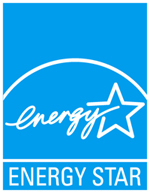If you are replacing an old heating system, you should always consider the most efficient unit available. Even if you pay more for it, you can realize energy cost savings -- and you can reduce your greenhouse gas emissions.
A high-efficiency natural gas furnace, also known as a condensing furnace, is the most efficient furnace available, because it provides your home with ideal heating comfort while using less energy than other models. High-efficiency furnaces are designed to extract additional heat from natural gas and, when they do, the flue gases condense, or turn to water -- hence, the name condensing furnace.
Energy Efficiency Rating
The energy efficiency of natural gas furnaces is measured by AFUE -- annual fuel utilization efficiency. The higher the AFUE number, the more efficient the model. High-efficiency furnaces have AFUE ratings of 88 to 97%, whereas mid-efficiency furnaces range from 78 to 82%
You’ll notice that there are labels on new furnaces. One is the EnerGuide label. This label is on every furnace, it tells you in very simple terms what the furnace’s AFUE rating is. Keep in mind that just because a furnace has an EnerGuide label it does not necessarily mean that the furnace is energy efficient, it simply means it has been tested. What is the ENERGY STAR® furnace?

If the furnace you are looking at has an ENERGY STAR® label on it, it means that it is an excellent energy wise choice. Only furnaces that are exceptional in the area of energy efficiency (AFUE rating of 90% or more) earn the ENERGY STAR® label. For more information on the ENERGY STAR® program.
When looking for a high efficient furnace, you might also want to consider an ENERGY STAR® programmable thermostat. Significant cost savings
Thanks to its high-tech design, a high-efficiency natural gas furnace squeezes the most heat out of every heating dollar. For every dollar you spend on energy, it produces 88 to 97 cents worth of heat. It could save you up to 24% (97 AFUE - 78 AFUE) in energy and related energy costs. Its high-efficiency will also help to insulate you from increasing energy prices. All in all, the new furnace you choose will become a very big part of your energy reduction plan. Choose the most efficient furnace your budget allows. Once it’s installed, take care of it and it will take care of lowering your heating costs. Just ask your heating contractor to help you calculate the savings a high-efficiency furnace can bring you. Energy-saving electronic ignition
Did you know electronic ignition has replaced the continuous burning pilot light in natural gas furnaces? This technical advance saves energy by producing a safe and efficient means of igniting the burner when the thermostat calls for heat. Easy maintenance for efficiency
When your furnace operates at peak efficiency, it uses less energy and costs less to operate. Have a heating contractor perform an annual maintenance check on your furnace and venting and cooling systems to ensure they are operating at peak efficiency. Simple things you can do between maintenance checks:
- Clean or replace the air filter on your forced-air furnace every one to two months. A dirty filter reduces airflow and makes your furnace run longer.
- Allow for unobstructed airflow near hot air registers (see left), return air grills, radiators, and baseboard heaters.
- Speaking of furniture, be sure it’s not over blocking heating vents or cold air returns.
- Seal the seams of your furnace ducting with aluminum foil tape, not duct tape.
For information on the features and benefits of furnaces.
*Reference: Union Gas Furnace Efficiency & Conservation: https://www.uniongas.com
